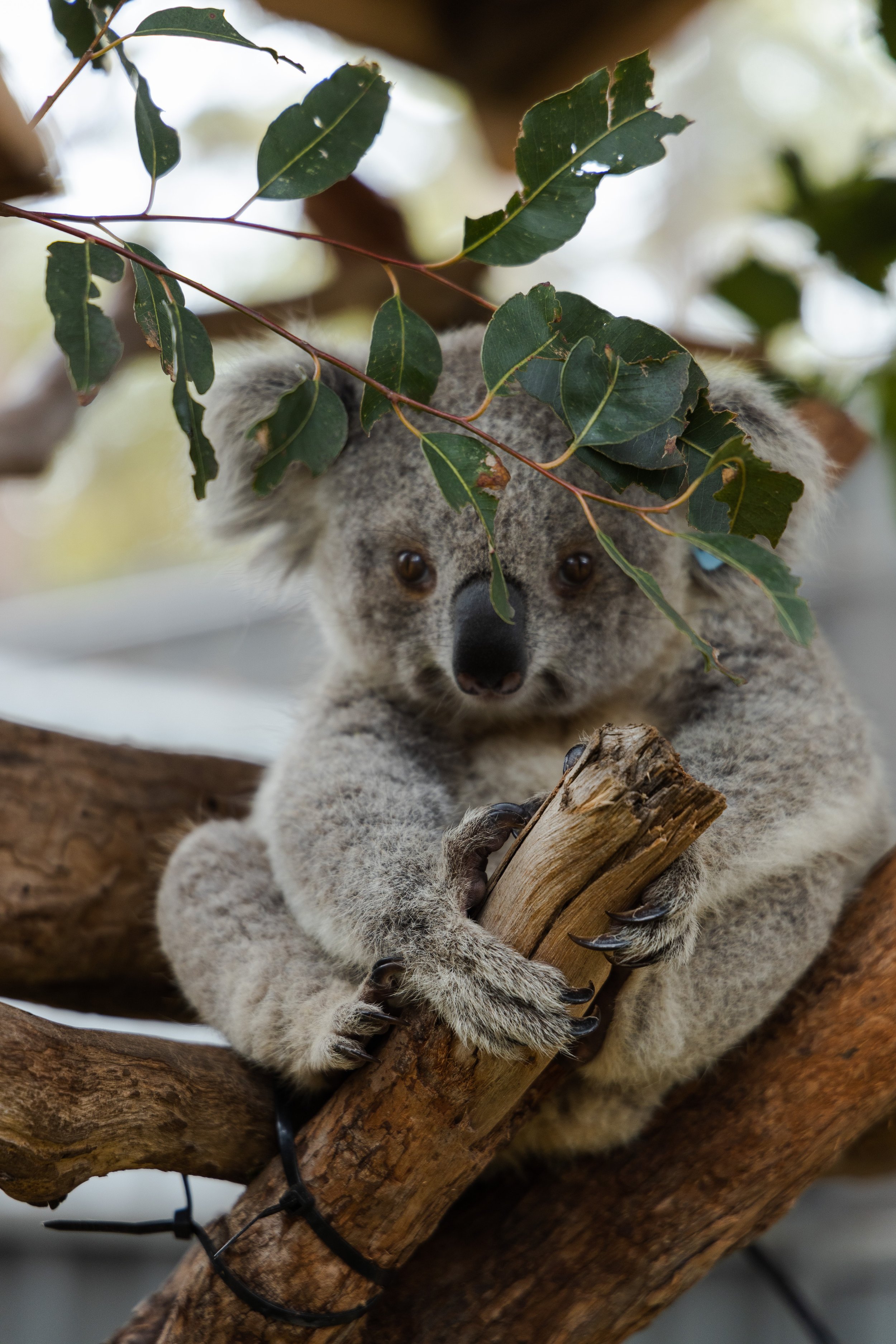Kangaroo
A comfortable hopping speed of a kangaroo is around 21-26km per hour, however they can move up to 71km per hour over shorter distances. That’s faster than a racehorse! Kangaroos use their large feet and powerful hind legs to jump up to 9 metres long in one single leap! They have small front legs and a long strong muscular tail, which helps them balance while jumping.
Emu
Emus are the second largest bird in the world, growing up to 2 metres tall. They have three toes on each foot and powerful legs that enable them to run fast. Emus have two eyelids, one for blinking and the other to protect the eye from dust and sand.
Koala
Koalas can sleep up to 18 hours a day. Eucalyptus leaves are low in nutrients so when they are not eating, they spend their time dozing in trees to conserve energy.
Wombat
A wombat’s poop is shaped like a cube. They arrange their cubed poo to mark their territory and attract mates. The cubed shape is perfect as it is stackable and less likely to roll away. How clever!
Platypus
The platypus is one of only two mammals (the echidna is the other) that lay eggs. Their babies (called puggles) feed from special mammary gland ducts on their mother by sucking it out of the folds of her skin or from tufts of her fur.
Echidna
Echidnas have no teeth. They use their long sticky tongue to collect large quantities of ants and termites or other invertebrates and grind them between their tongue and roof of their mouth before swallowing.
Kookaburra
The famous sound of a kookaburra laughing can be heard at any time of the day however is commonly heard at dawn or dusk. The call is mainly used to establish territory amongst family groups, warning other birds to stay away.
Tasmanian Devil
The Tasmanian Devil gets its name from the loud growls, screams, coughs and screeches they make as a defence mechanism to scare off predators or other devils. They also have the strongest bite of any mammal their size, thanks to their oversized head and extending jaws. Despite this, Tasmanian Devil’s are quite shy and timid and only display these defence mechanism’s when they feel threatened.









